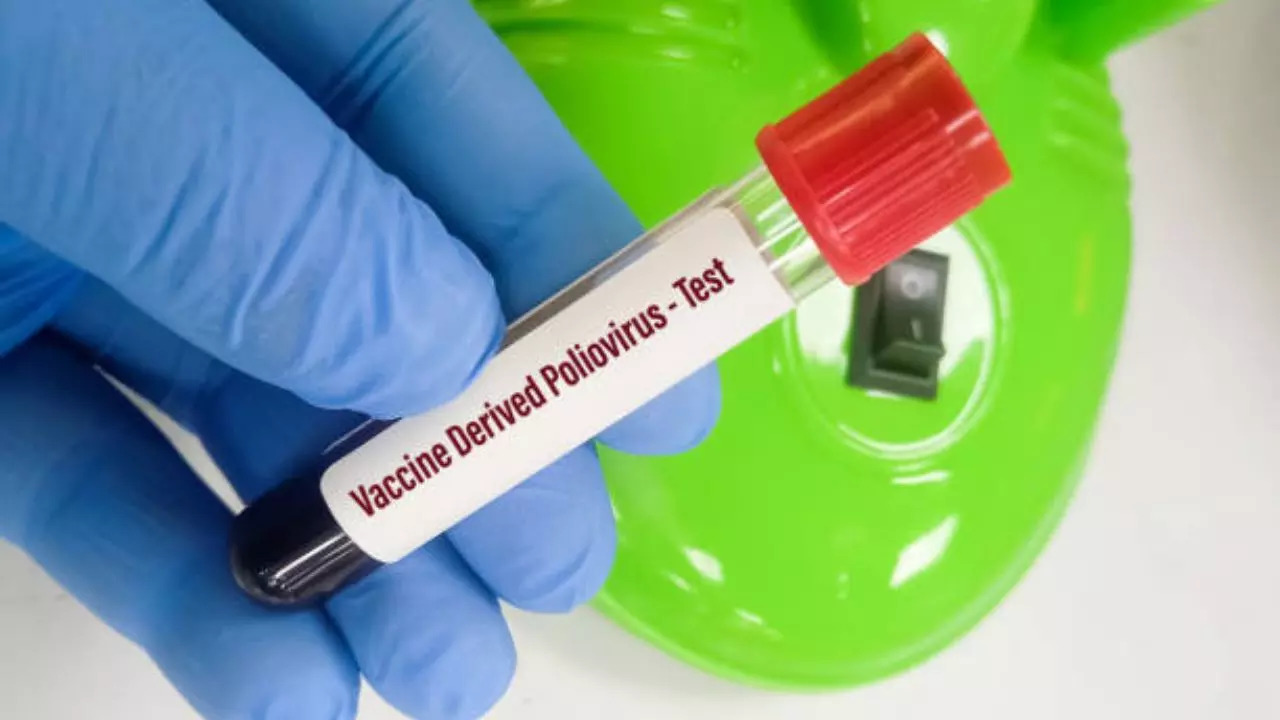
Explanation: A boy in Meghalaya got vaccine-induced polio, so let’s understand what vaccine-derived poliovirus is (Image courtesy: iStock)
The World Health Organisation (WHO) declared India polio-free on 27 March 2014, when the last case of polio was reported in the country. Poliovirus A case of poliovirus was reported in Howrah, West Bengal. However, recently a case of vaccine-derived poliovirus was detected in a two-year-old child in Meghalaya. Does this mean that the poliovirus is coming back again? Let’s find out!
Vaccine-derived poliovirus (VDPV) is a rare but serious sequelae of polio. oral poliovirus vaccine Use of (OPV). OPV contains live, weakened poliovirus that can mutate and revert to a virulent form, causing polio in vaccinated people or spreading to others. OPV uses weakened poliovirus to boost immunity. Rarely, the compromised virus can mutate and become virulent again, potentially causing polio. However, this is what happened in Meghalaya, a two-year-old child in Tikrikilla, Meghalaya has been infected with vaccine-derived polio. This is not a case of wild poliovirus, but an infection that occurs in some people with low immunity. Unlike wild poliovirus, which spreads directly from person to person, vaccine-derived polio is not contagious. To reduce the chances of cases occurring as a result of vaccination, efforts are being made to switch to inactivated polio vaccine (IPV). So is this a sign that this virus could come back? Let’s check!
What is vaccine derived poliovirus?
Dr Rakesh Gupta, Senior Consultant, Internal Medicine, Indraprastha Apollo Hospitals, explains that VDPV occurs when the weakened poliovirus in OPV mutates and regains its ability to cause paralysis. There are two types of VDPV:
1. Vaccine-associated paralytic poliomyelitis (VAPP): A rare occurrence (about 1 in 2.4 million) where the vaccine virus causes polio in a person who receives the vaccine.
2. Circulating vaccine-derived poliovirus (cVDPV): When a mutated vaccine virus spreads in the community, causing polio in other people.
Have there been cases of polio caused by vaccine in India before?
Cases of vaccine-induced polio have been reported before. In 2013, an 11-month-old immuno-deficient child from Beed district in Maharashtra died of vaccine-induced polio, and a 2.5-year-old child in Delhi also contracted the virus. In 2022, vaccine-induced poliovirus was detected in sewage samples in Kolkata. Now, a fresh case of vaccine-induced poliovirus has been found in Meghalaya.
How to prevent the spread of poliovirus?
Dr Saurabh Khanna, Chief Consultant, Neonatology & Paediatrics, CK Birla Hospital, Gurugram, says that one must ensure that one has taken all the prescribed doses of inactivated polio vaccine (IPV), which provides immunity without the risk of virus mutation, to protect oneself from vaccine-derived polio.
“To prevent the polio virus from spreading, keep your community’s vaccination rate high. Take precautions wherever polio cases are reported or vaccination rates are low. Maintaining good hygiene, which includes frequent handwashing, use of clean water and sanitation techniques, also reduces the chance of polio infection. Be aware of vaccination schedules and heed any health advice given by regional health officials,” he said.
Measures to reduce the risk of vaccine-derived poliovirus
Dr. Rakesh Gupta explains that the following measures should be taken to reduce the risk of VDPV:
1. Switch to inactivated poliovirus vaccine (IPV): IPV contains inactivated poliovirus and cannot mutate or produce VDPV.
2. Improve vaccination coverage: Ensure high vaccination rates to prevent the spread of wild poliovirus and reduce the risk of VDPV.
3. Increase surveillance: Monitor VDPV cases and respond promptly to outbreaks.
4. Molecular surveillance: Use genetic sequencing to detect and track VDPV strains.
5. Vaccine management: Properly store, handle, and administer vaccines to prevent contamination and mutation.
6. Public awareness: Educate communities about VDPV risks and the importance of vaccination.
Get the latest news on Times Now as well as breaking news and top headlines from across health and the world.



